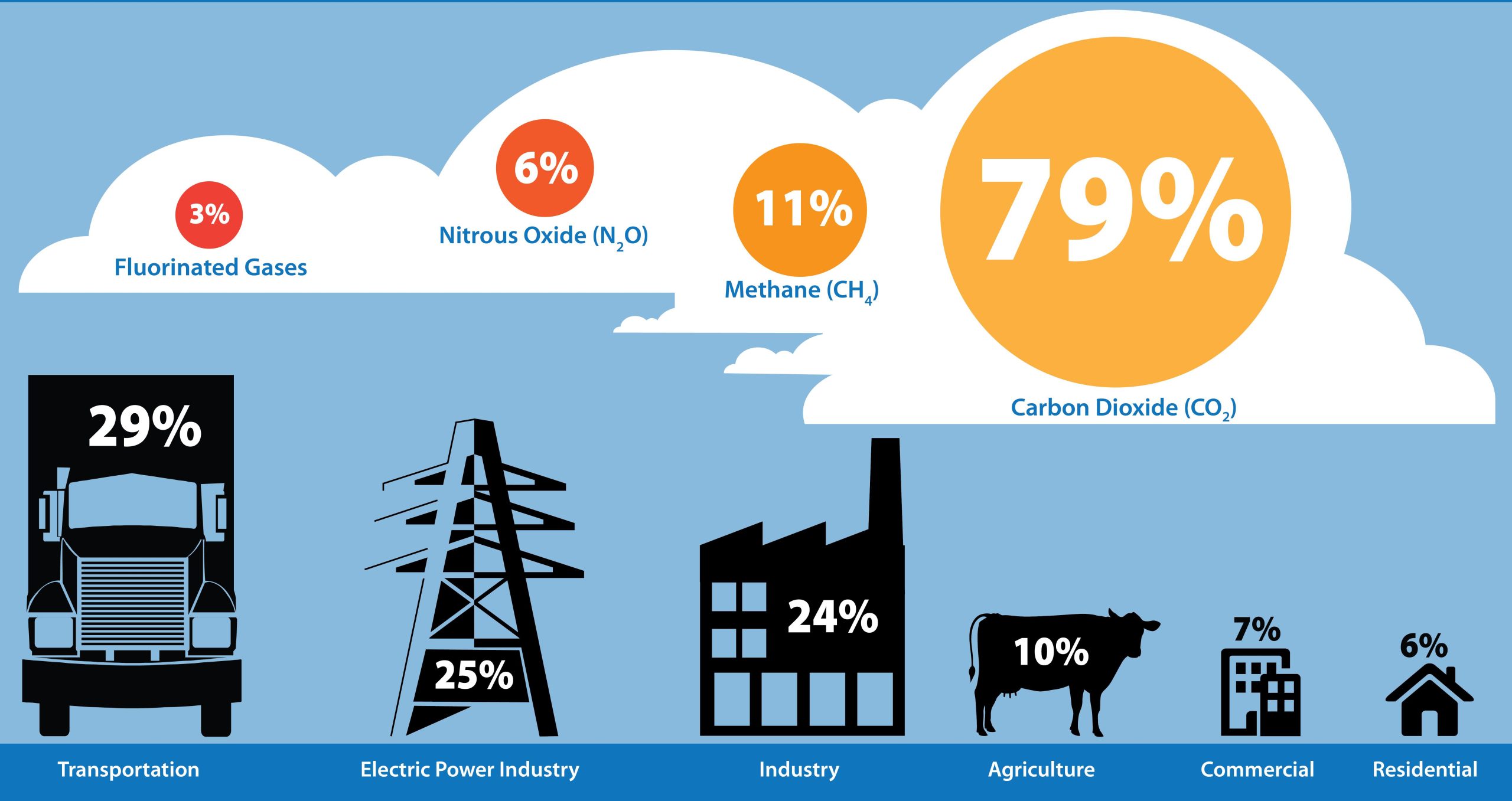Steel, cement emissions remain micro EPA GHG Inventory factors
Sources: U.S. Environmental Protection Agency; CMCM staff
The Environmental Protection Agency’s just-published Inventory of U.S. Greenhouse Gas Emissions and Sinks cites 5.586 billion metric tons (mt) of carbon dioxide equivalent (CO2e) emissions for 2021, a 6 percent increase over the prior year. EPA assigns CO2e metrics by UN Intergovernmental Panel on Climate Change-designated global warming potential, where carbon dioxide, methane and nitrous oxides are respectively weighted 1, 28 and 265, while certain hydrofluorocarbons reach into the four- or five-digit range.
2021 U.S. GREENHOUSE GAS EMISSIONS BY SECTOR, COMPOUND

The Inventory spans six economic sectors; the third largest, Industry, accounted for 24 percent, or 1.34 billion mt of CO2e in 2021. Within Industry, EPA reports emissions for two key construction inputs: Iron and Steel Production, 38.4 million mt; Cement Production, 41.4 million mt. In comparison to widely adopted metrics suggesting the sectors each account for 7-8 percent of global GHG emissions, iron/steel and cement each contributed about 0.7 percent of the U.S. 2021 output. EPA researchers calculate CO2e totals for steel and cement by factoring fuel or source mixes behind combustion phases and process electricity.

The 881-page report is posted at www.epa.gov/ghgemissions.EPA is compelled to submit updated versions to the UN by April 15 annually.
“For 30 years EPA has worked with researchers, federal partners, and stakeholders to produce a detailed and complete inventory of U.S. greenhouse gas emissions and sinks,” says EPA Office of Air and Radiation Principal Deputy Assistant Administrator Joseph Goffman. “This work reflects our commitment to transparency, data quality, and timeliness as we meet our inventory obligations under the United Nations Framework Conventions on Climate Change.”